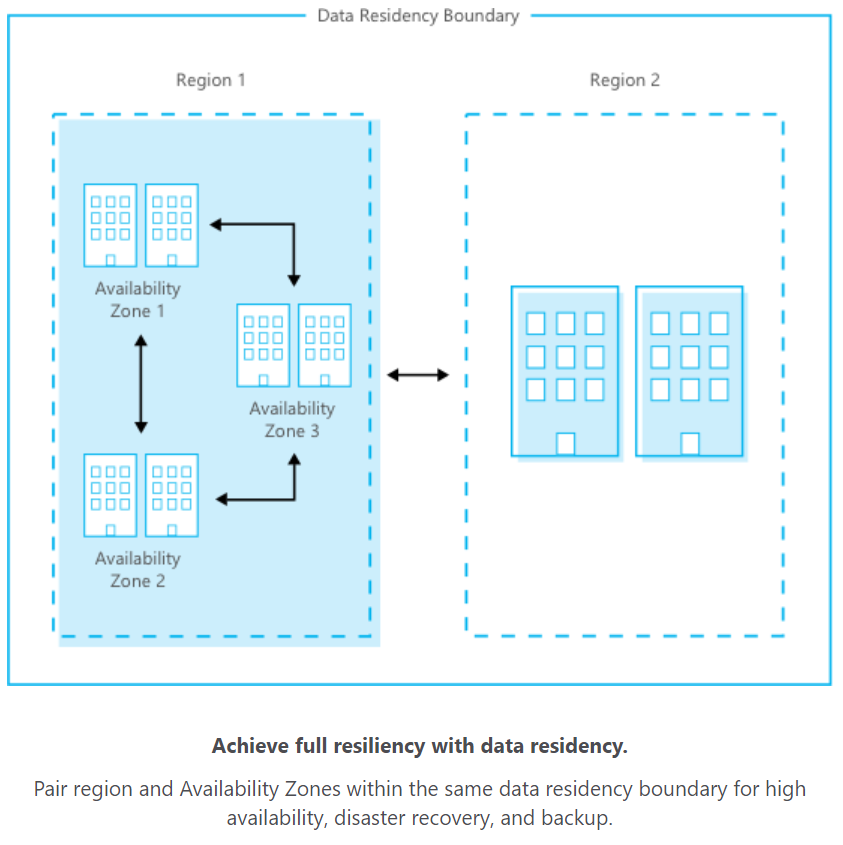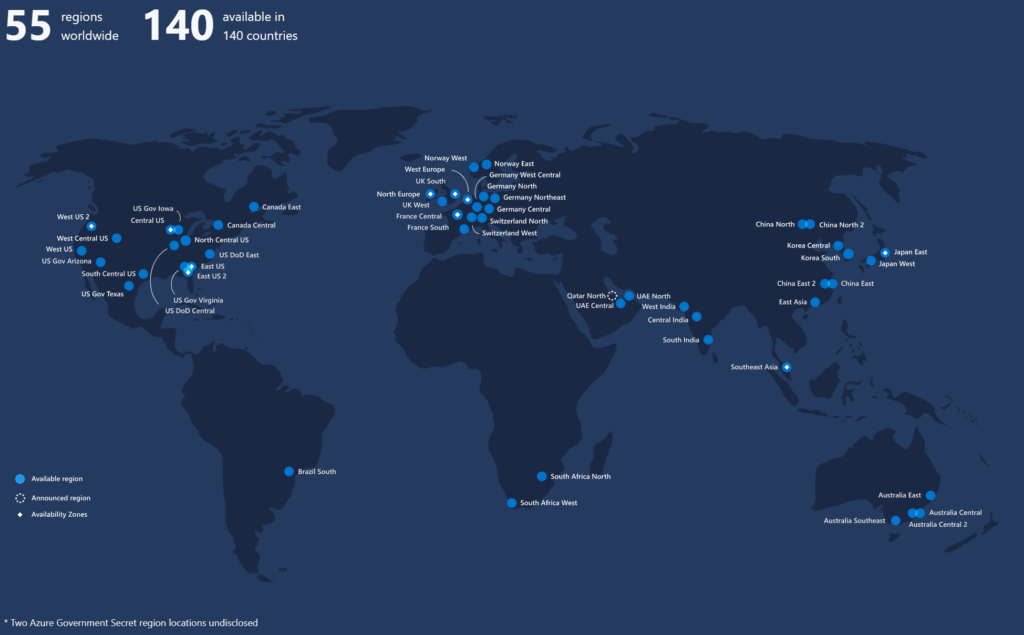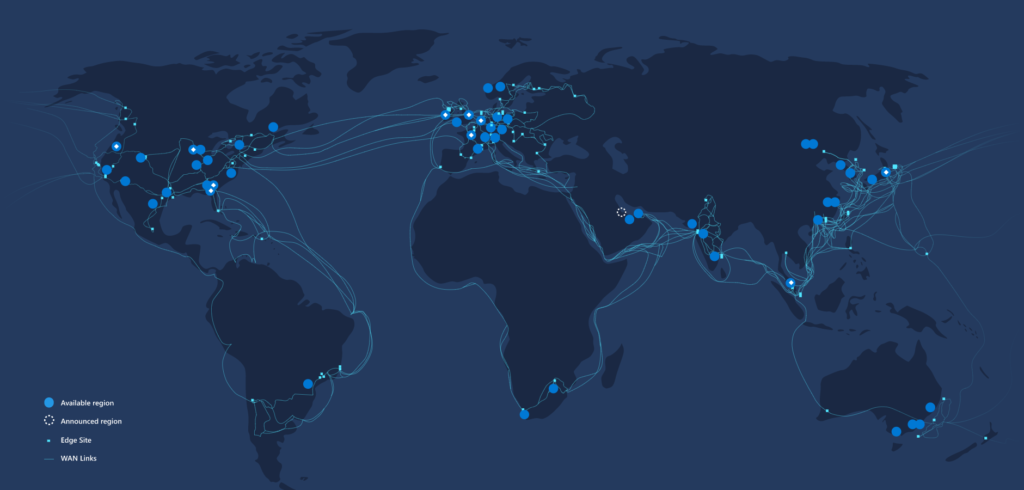[NEWS] Azure News of the week
5. Juli 2024Also this week there were many news around Microsoft Azure! Here as always the overview for you: Have fun reading and trying it out…
One thing that comes up quite often when I talk to customers about Azure, are regions.
There are some strange ideas out there what regions exist, which regions you can use and how the region model works.
Whenever you create a resource in Azure, no matter if it is a VM, a Database or a Cognitive Service, you have to choose the region where this service should run in.
Based on your selection the data used by this service will be stored in a defined area and you get a pricing that fits the location. For example you can imagine that running a data center in Dublin is cheaper than doing this in Amsterdam. At least if we have a look at climate conditions, insurance risks and tax laws … this makes sense.
But the selection of a region has some more impact. Therefor it is important to understand the overall structure of Azure.
Microsoft builds a structure out of

A geography is based on customer and market needs. Each Geo consists of two or more regions (normally…Brazil and Qatar are exceptions here). In Europe, for example, you can find several geographies like Europe, France, UK, Germany, Swiss and Norway.
Yes sure, all the Regions are in Europe, but based on the Regions, data residency, sovereignty, compliance, and resiliency requirements are honored.
The Region itself is the location you can choose while working with Azure. Every Region consists out of several data centers. In some Geos Microsoft has defined primary Regions. For example in France where you get access to France Central, but for access to France South you need to contact Microsoft.
Availability Zones are physically separated locations withing a region. They consist out of one or more data centers. Each Availability Zone has separate power, cooling and networking.
Data Centers are the real locations, where magic happens. Your servers will run there … there is the hardware! The detailed locations of the data centers are hidden. You cannot even find them on Google Maps.
As we now know what a region is it is time to make a choice where to run your first workload. Right now (Jan 2020) we have 55 active regions available. To find out more about those regions you can go to the Microsoft Website, which will show an actual overview:

When you sign a standard contract with Microsoft you can access all Azure regions globally. So you do not buy Azure in a region. You get a contract for Azure and then, when spinning up the first services, you can choose your region.
Only exception from this:
One more thing you have to understand is the difference between Production Sites and Edge Sites in Azure. From time to time you can find some announcements like this:
Latency is the new currency of the Cloud: Announcing 31 new Azure edge sites
This does not mean that we will get more than 80 regions soon … they are talking about „edge sites“.
All the regions mentioned above are so called production sites… sites where the real hardware is located. This is where your service is running and what you pay your money for.
All those regions are connected via the Global Microsoft Backbone network … but more on this in a later post.
If you are a customer in Spain you may wonder, how you should get access to Azure, as the closest regions are in France, Ireland or the Netherlands. So often at this point latency is a big issue while thinking this through.
And this is where Azure Edge Sites are in the game!!!

In addition to the 55 regions, Microsoft has more than 150 Edge Sites, which are locations where you can get access to the Microsoft Global Backbone. So even when located in Spain, you will find an edge site that will connect you as fast as possible to Azure.
So it is not necessary to dig a cable through to Amsterdam 🙂
Now with all the knowledge about regions and sites there is one important thing to mention. Not every service is available in every region. Some of the mayor services are online available in the „flagship“ regions. Most new services and services in preview will be rolled out to US regions first, and will be brought to the world later.
But this really depends on the service and the impact on Azure business.
To get an overview Microsoft runs a website which lists the Products per Region.

Here you can also see which services are in preview, are planned and especially what is the estimated time for release.
Choosing an Azure region seems very simple when done in the Azure Portal. But the available Azure Regions define which services you can use, at which cost and under which compliance and regulations.
Hope you enjoyed the first article in the BASIC category … if you want to know what to expect during the week … have a look here
Leave a comment